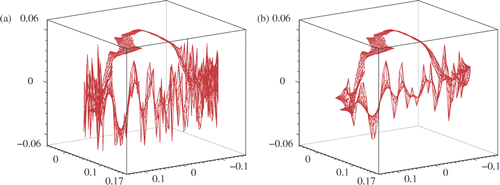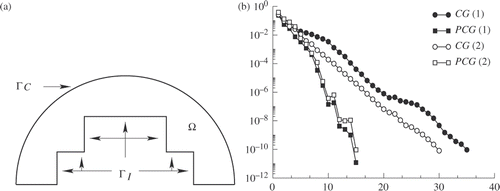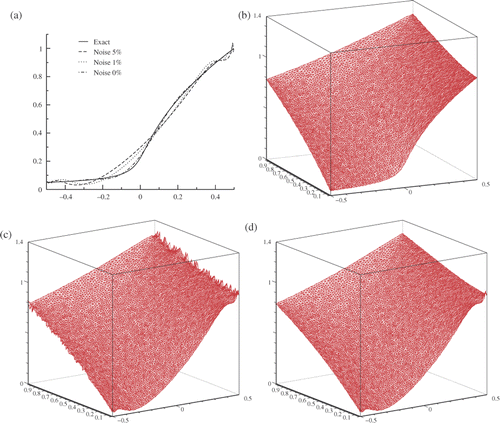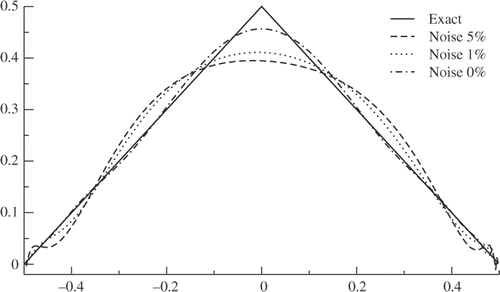Figures & data
Figure 3. The Lavrentiev finite element solutions with a noise of 10%, uD are to the left and uN to right. The Lavrentiev parameters are selected so as to obtain optimal computations. Upper curves are when ΓC is the T boundary and lower ones are for the circular boundary playing the role ΓC. Note that the noise on the Neumann boundary the data has an insignificant effect on uN, it looks more regular than uD which suffers from the contamination with the Dirichlet data.
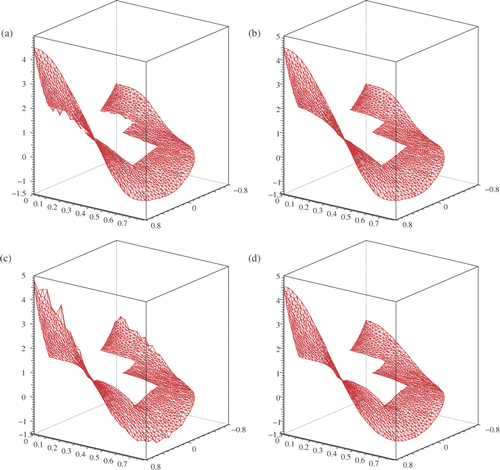
Table 1. The relative error between the computed solution uN and the exact solution u on the whole domain. The regularization method is either the Lavrentiev or the PCG(NR) method. The parameters ϱ* and k* in parenthesis are chosen by means of the discrepancy principle.
Figure 4. The mesh used (upper panel). The gap between the computed uD and u (to the left) and between uN and u (to the right).
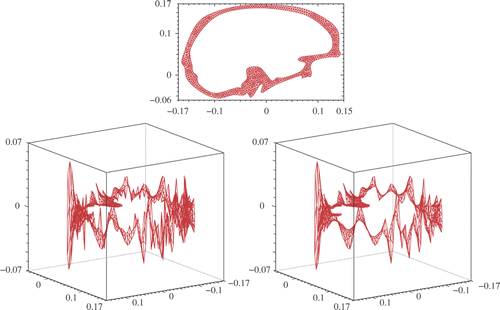
Table 2. The relative error between the computed and the exact solutions. The regularization method is either the Lavrentiev or the PCG(NR) method.
Figure 5. The distance to the exact solution of the Lavrentiev finite element solutions. (a) uD and (b) uN. The error is maximum at the vicinity of ΓN. Even though uN appears les perturbed than uD, the maximum of the error is similar for both solutions.
